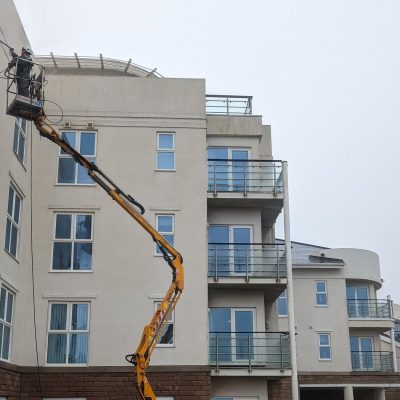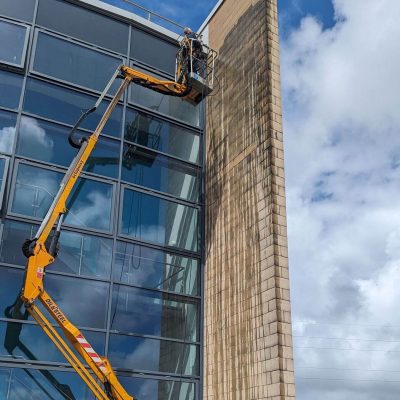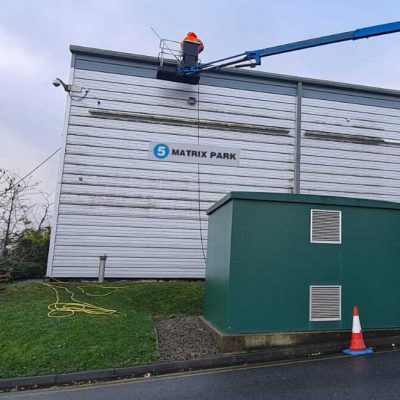In 2005, the Work at Height Regulations was introduced to prevent deaths and injuries caused by falls from height at work. These regulations apply to all work at height where there is a risk of a fall that could cause personal injury. The regulation places duties on employers, self-employed, and any person who controls work at height.
In this blog post, we will cover everything you need to know about working at height.
Let’s get into the details.
What is Work at Height?
The regulations define work at height as:
- Work in any place where a person could fall a distance liable to cause personal injury if precautions are not taken.
- It includes getting to and from a work area except by a staircase in a permanent workplace.
- The risk of a fall can be from a roof, scaffolding, mobile platforms, ladders, etc.
- There is no minimum height – it applies to any fall that could cause injury.
The Key Requirements of the Regulations
Avoiding Work at Height
The first duty is to avoid work at height if it is reasonably practicable to do so. For example, can a lightbulb be changed using a pole device rather than climbing up a ladder? Is there a way to reduce the height or install safety barriers? Always consider if there is a safer option before working at height.
Conducting Risk Assessments
A risk assessment must be carried out for any work that cannot be avoided at height. It should identify the hazards (e.g. fragile roofs), and evaluate the level of risk. It must also outline the measures needed to control or mitigate the risks.
The assessment should consider:
- The task and how long it will take
- The environment – weather, obstructions, ground conditions, etc.
- Equipment required – selection, condition, erection, dismantling
- Ability and experience of the workers
Risk assessments must be recorded and reviewed regularly. Workers should be involved in developing risk assessments.
Hierarchy of Controls
There is a hierarchy of control measures that should be followed to manage risks from work at height:
- Avoid the risk by not working at height – e.g. use extending equipment from ground level
- Prevent falls – use work platforms, edge protection, nets, safety harnesses, etc.
- Mitigate the consequences of a fall – use nets, airbags, etc.
- Provide instruction and training on safe work procedures
The highest priority is avoiding the risk, followed by measures to prevent or reduce the likelihood of falls. Training is important but lower down the hierarchy than other controls.
Selecting Work Equipment
Any equipment used for work at height must be:
- The most suitable equipment for the job
- Allow safe access and egress
- Be appropriately inspected and maintained
There are some key considerations when selecting equipment:
- Ladders – only for light, short-duration work. Make sure they extend at least 1m above landing point, are footed or tied, and on firm, level ground
- Scaffolding – must be erected, altered and dismantled by competent persons. Mobile scaffolds should be stable, have guard rails and toe boards. Workers must stay within the handrail.
- Mobile elevated work platform (MEWPs) – operators must be trained, harness anchored to the basket, outriggers used, ground firm and level. Should not be moved while workers are on the platform.
- Rope access – only trained competent workers, with back-up devices, tested ropes/harnesses, and someone keeping watch.
- Safety harnesses – attach to secure anchorage point, with sufficient clearance to avoid hitting ground in a fall. Anchors and harnesses should be tested and approved.
Inspection and Maintenance
Equipment for work at height needs regular inspection and maintenance to keep it safe. Look for any defects like cracks, bends, wear and tear. Make sure safety features are working. Keep records of all inspections and repairs.
Any damaged or defective equipment must be taken out of use until repaired or replaced. Set up reporting procedures so any issues are flagged quickly.
Training and Supervision
All persons involved in work at height need to be trained to manage the risks and work safely. The level of supervision required will depend on the risks involved and workers’ level of experience. There should always be:
- Clear instructions on safe work methods
- Adequate supervision of inexperienced workers
- Ongoing reminders and refresher training
It can be helpful to develop a safe system of work detailing procedures to follow. Workers should be familiar with emergency procedures too.
Emergency Procedures
Emergency procedures need to be in place for evacuating from height and rescuing anyone who falls or becomes stranded. This may require training personnel in rescue techniques, having harnesses for rapid evacuation, or installing evacuation slides.
First aid supplies should be readily available including blankets to prevent shock. Reporting processes must be followed to notify appropriate authorities of any incident.
Considerations for Fragile Surfaces
Roof lights, fragile roofing materials and surfaces like asbestos cement sheets require extra precautions as they can’t support a person’s weight. The hierarchy of control should be followed:
- Avoid working on or near fragile material
- Use platforms, coverings or crawling boards to spread the weight
- Minimise persons and materials near fragile surfaces
- Install barriers where possible
- Provide fall arrest equipment
- Highlight fragile areas with warning signs
Other key points:
- Assess the nature and condition of surfaces
- Follow manufacturer’s guidance on safe load capacities
- Take lighter, cautious steps. Don’t stand on unsupported fragile materials
- Look for damage around openings, drainage points or signs of corrosion
Final Words
Working at height can pose serious risks if not managed properly. By following the Work at Height Regulations, businesses can ensure the safety of their workers and avoid incidents.
The key obligations are to:
- Avoid working at height where possible
- Conduct risk assessments
- Follow the hierarchy of controls
- Select appropriate work equipment
- Inspect and maintain machines and access equipment
- Provide adequate height training and supervision
- Have emergency procedures in place
- Take extra care around fragile surfaces
Putting these safe systems of work in place and promoting a safety culture, businesses can gain the protection of working at height without the risk of serious harm to workers. Anyone involved in managing work at height should have a thorough understanding of the working at height regulation and best practice to prevent falls.



